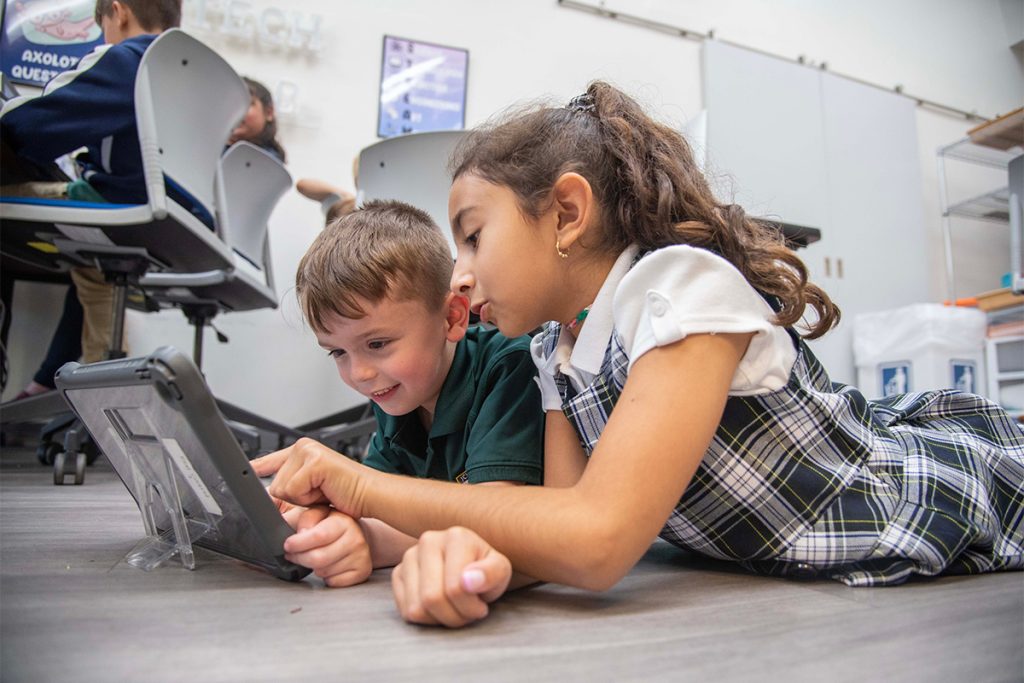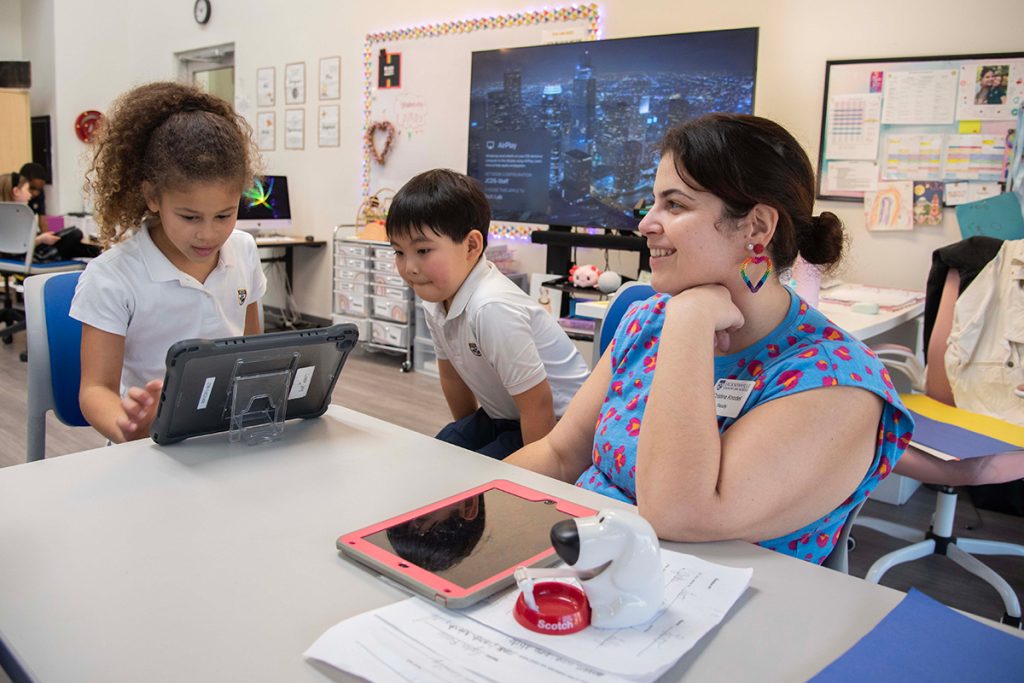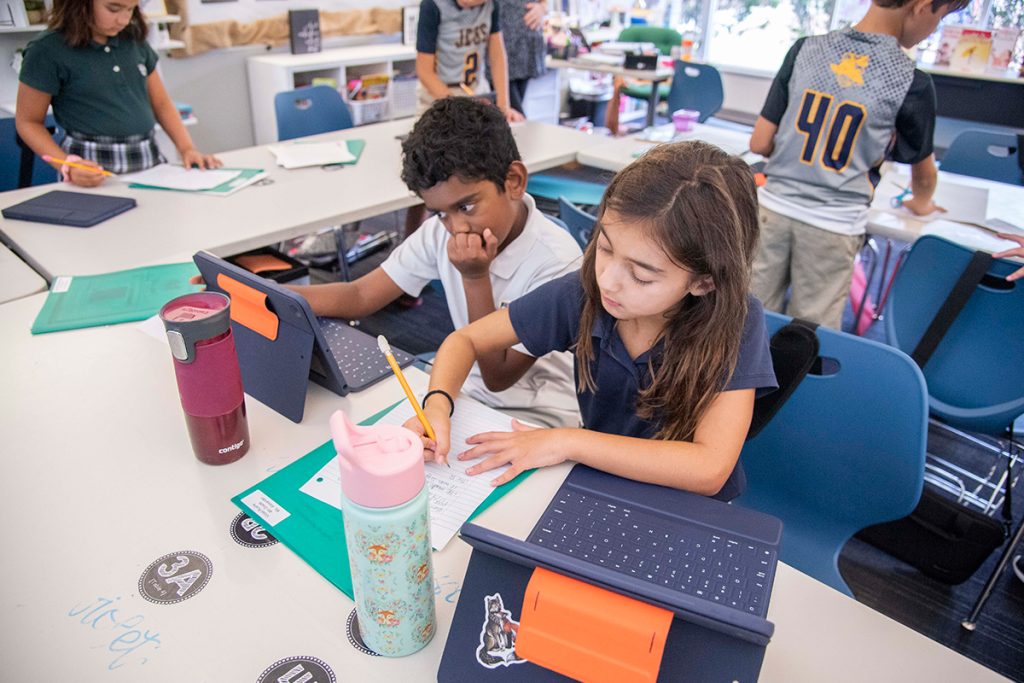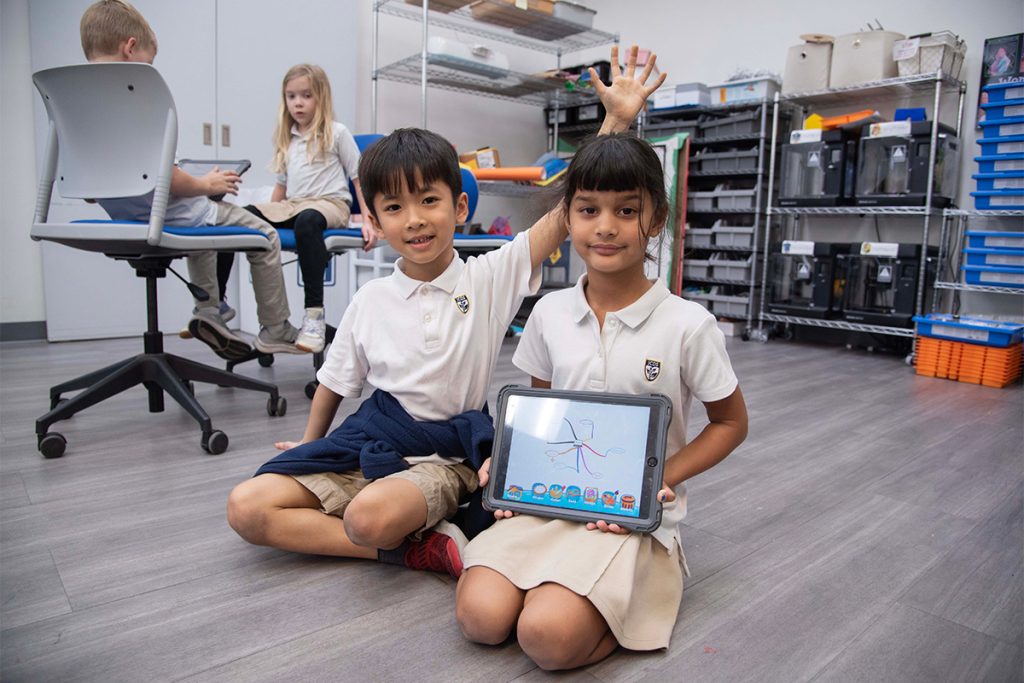New School Year Presents Opportunity for Good Digital Habits
Posted on September 9, 2023 By Editor Top Stories

A new campaign is driving people to ditch cell phones for children under 13. Find out why, along with other tips for shaping good digital citizens.
Each year, as summer draws to a close, families regroup and begin the transition to a school-year schedule. This transition usually involves re-commitment to, or establishment of, healthy family habits.
A quick perusal of the internet reveals dozens of lists of back-to-school tips that promise to make your household efficient, stress-free and harmonious. While there is no magic formula for school-year success, there is a lot of overlap in these suggestions.

The American Academy of Pediatrics released a list of 12 back-to-school pointers for 2023. In addition to the usual suspects – plenty of sleep, eating a nutritious breakfast and minimizing TV time – there is also guidance on healthy habits regarding technology and social media.
According to the list, “Starting school again is a good time to engage in conversations with your child about if and how they use social media, which can be beneficial but also problematic for some. We are still learning about the ways social media can affect human health, especially among children and teens.”
Schools, parents and other organizations that serve Jacksonville’s student population are working hard to integrate emerging data into their policies, as well as into the advice they give to parents. At Jacksonville Country Day School (JCDS), which serves students in pre-K through sixth grade, they refer to this process as “shaping good digital citizens.” JCDS does not allow cell phones or internet-connected devices on campus, and each student is provided an iPad that is monitored by school personnel.

“As kids become more reliant on technology, our goal is that they learn how to find a good balance and how to use it as a tool and not a crutch,” said Cristina Knodel, Computer Science & Technology Integration Specialist at JCDS. “We talk about focusing on your friendships, going outside, picking up a hobby, doing something creative, having dinner without any phones, not using screens right before bed.”
Making sure that children and youth are not being harmed by their social media and technology use is a group project. In addition to school personnel, parents and other adult leaders play a role in the conversation.
“I’m planning a sabbath vocational discernment and mental health retreat for juniors and seniors,” said Lauren Scott, Associate Pastor for Youth and Families at Riverside Presbyterian Church. “When I was talking to them about what I was planning, I said there will be parts of the trip where there will be no phones, and they were actually very excited about that, as high schoolers.”

By working with both youth and their families, Scott sees the issue from both sides.
“I think we all recognize how difficult life would be without phones, especially in safety aspects. I appreciate that I can immediately get in contact with youth (when on trips),” Scott said. “I’m hopeful that by giving them a little bit of a break, they, and myself too, might recognize the importance of it and be able to establish healthier technology patterns on their own time. I think there’s a longing for that.”
Because digital childhoods are a new phenomenon, comprehensive studies on the impacts of technology and social media are few and far between. The Centers for Disease Control released its Youth Risk Behavior Survey data in February 2023. This massive study covers trends in various behaviors between 2011 and 2021, and the findings were sobering.
“The data tell a distressing story about the health and wellbeing of our nation’s young people,” wrote Dr. Kathleen Ethier, lead researcher. Almost every category of youth, all races and genders, experienced an increase in anxiety, depression and suicidal ideation. Commentators from across the cultural and political spectrum immediately pointed to social media use, especially among teenage girls, as being strongly correlated to the rise in mental health problems.

Correlation is not causation, but some parents would rather be safe than sorry. Several grassroots organizations have sprung up over the last few years to encourage parents to keep smartphones out of kids’ hands for as long as possible.
Wait Until 8th (waituntil8th.org) is an advocacy group out of Texas that offers parents a pledge to keep smartphones away from their children until eighth grade. HGTV stars Erin and Ben Napier recently launched Osprey (ospreykids.com), which goes a step further, creating a network of parents who will keep their kids smartphone-free until high school graduation.
Scott noted that, for families with engaged and attentive parents, pledges like this may work well but no one solution will work across the variety of situations faced by youth today, especially those in unsafe or unstable homes.
Ultimately, the most persuasive argument for limiting social media does not come from the American Academy of Pediatrics, but from observed behavior.
“My advice to parents is to just be present with their youth,” Scott said. “Practice what you want your youth to do and show them how to live out their lives. If they see you not always on social media and doomscrolling and being fully present in what’s happening in the home, at the game, at the show, at the gallery, they’ll recognize that they can do that too. We model so much more to children and youth than we will ever be able to comprehend.”
By Windy Taylor
Resident Community News




 (1 votes, average: 3.00 out of 5)
(1 votes, average: 3.00 out of 5)American Academy of Pediatrics, Centers for Disease Control, Cristina Knodel, Jacksonville Country Day School, JCDS, Kathleen Ethier, Lauren Scott, Osprey, Riverside Presbyterian Church, Wait Until 8th, Youth Risk Behavior Survey






